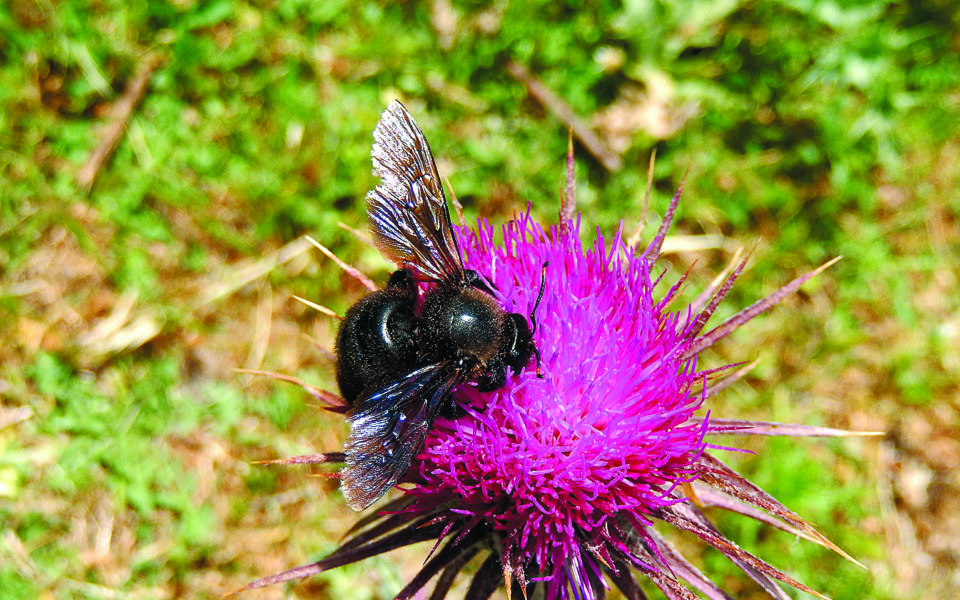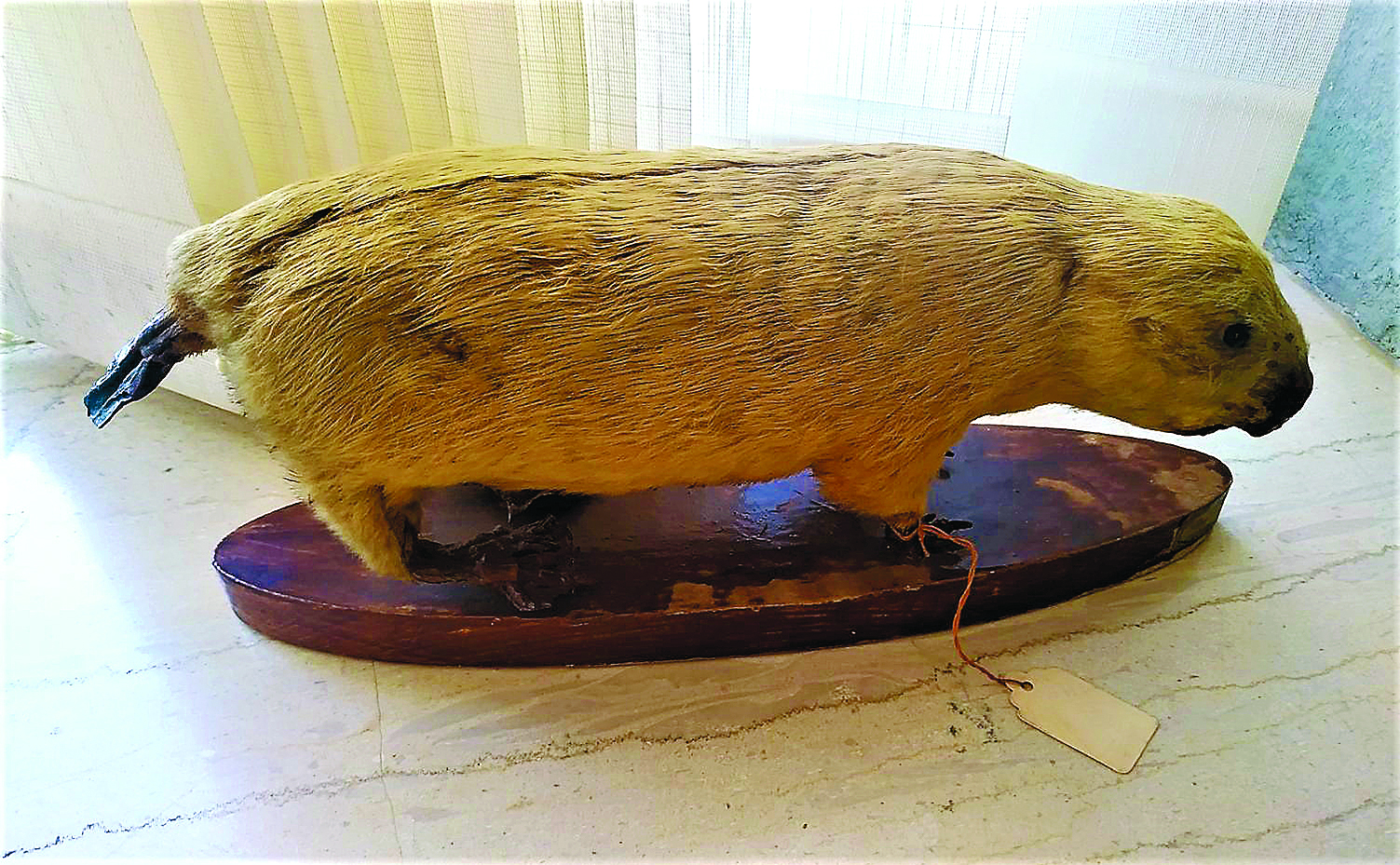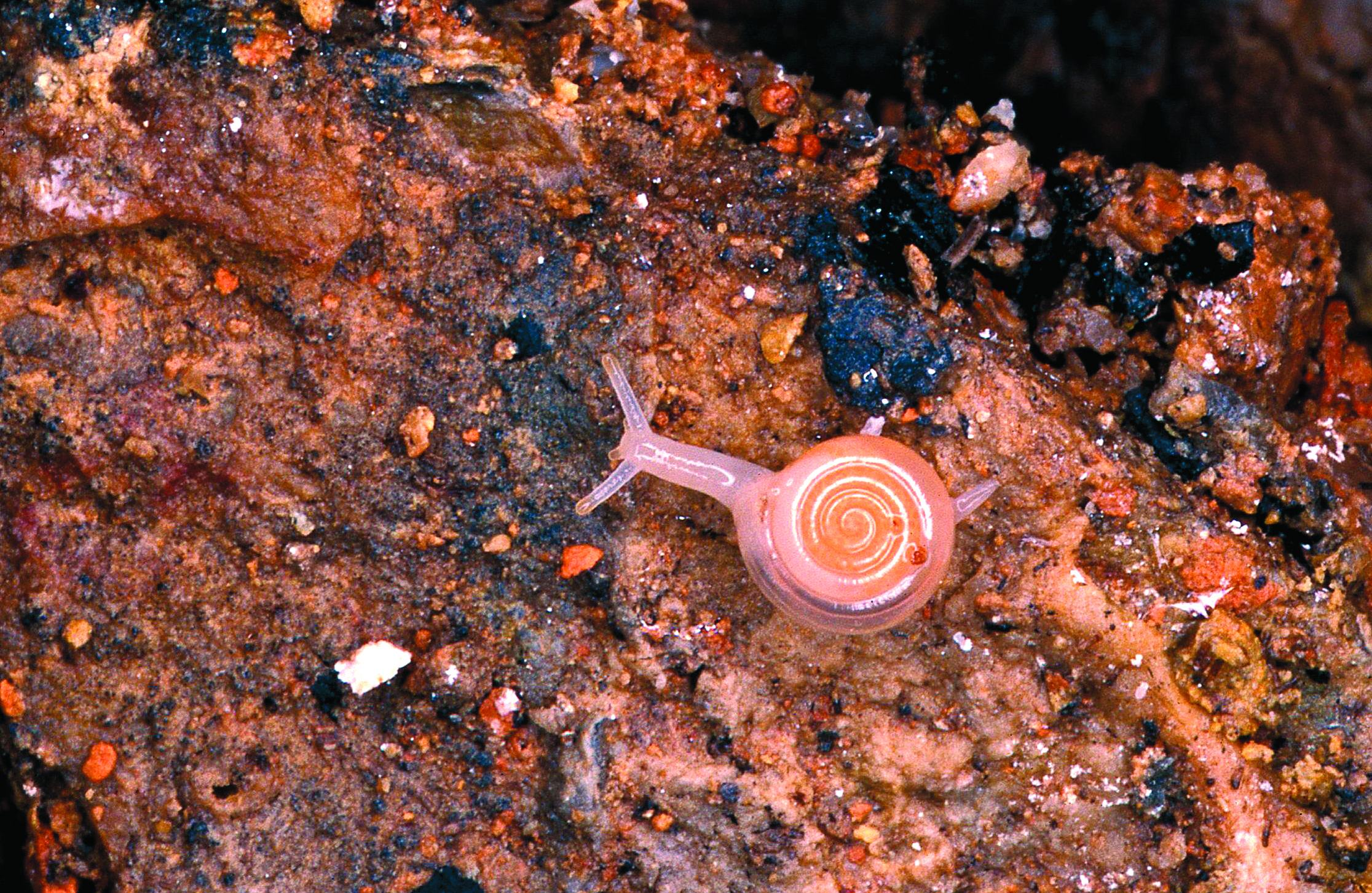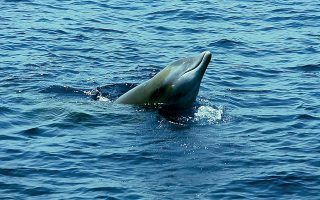‘Paradise’ is full of new surprises
Recent research underscores need for protection measures as Greece’s biodiversity continues to enthrall scientists

Not that we haven’t heard it before, but Greece really is a paradise of biodiversity and thanks to the systematic efforts of individual scientists and scientific bodies, this paradise keeps yielding fresh surprises.
Scientists are discovering new endemic species and information about the country’s flora and fauna all the time, constantly adding new pieces to the gigantic puzzle of ecological interactions that we know as the natural process.
Parliament’s Environmental Protection Committee was recently presented with the findings of three such research projects.
The first concerns a 40-year study into pollinators – those hard workers that are so essential to the processes of nature – which found that there are more than 1,200 wild bee species in Greece; the eastern Aegean island of Lesvos alone has more than Germany as a whole.
The second is a LIFE program that began in 2014 and is focused on the study of 10 types of bat and other kinds of cave life. Its findings are also impressive, as researchers have discovered new bat populations they knew nothing about previously, while also highlighting the important contribution to biodiversity of smaller caves that may be home to rare endemic species.
The subject of the third project is a pioneering program which concerns the reintroduction of beavers, which disappeared from Greece at least a century ago, as a means of bolstering ecosystems.
The remarkable progress represented by these three projects toward the protection of Greece’s biodiversity, however, is marred by yet another case of typical foot-dragging.
Even though the country managed to get approval for a 100-million-euro project under the European Union’s Recovery Fund for the study and protection of biodiversity and even though the timeframes demanded by the fund are strict, the Environment Ministry has already wasted eight months in preparing the project, confirming the general lack of interest in issues pertaining to the natural environment.
The wonderful world of wild bees
Researchers at the University of the Aegean have recorded more than 1,200 species of wild bee in Greece – a stunning number compared to the single species used in apiculture. And the more they discover about pollinators and their relationship to plants, the more light they shed on a fascinating world of complex interactions and their priceless ecosystemic contribution to the preservation of nature.
Theodora Petanidou, a professor of ecology and ecogeography at the university, has been involved in the field for the past 40 years and has been the coordinator of the University of the Aegean’s Biogeography and Ecology Lab for the past 20.
“What we are trying to understand is not so much the biology of pollinators, but their ecology; their relationship to flowering plants. Who pairs with what, how dependent are they on the climate, what is their biogeography, what threats they face,” she explains.
Many years of research by Petanidou and the lab have resulted in the recording of 1,200 wild bee species in Greece, well above significantly larger Mediterranean countries like Italy and Spain. On the eastern Aegean island of Lesvos alone, they have found 650 species, whereas Germany has 600.
“Among others, we studied the impact of grazing and forest fires. What we concluded was that medium-intensity grazing and fire is what has the greatest benefits for biodiversity. We also studied the impact of bee farming on Aegean ecosystems, and those of the Cycladic islands in particular, and found that excessive bee farming is harmful to wild bees. And this is because wild bees do everything on their own: They don’t have prefabricated hives and colonies with pre-assigned roles, so common bees tend to dominate out in the field,” Petanidou explains.
One of the issues that has been gaining a lot of scientific attention in recent years is climate change. “Bees like the heat, so they are not adversely affected by rising temperatures. But rising temperatures do affect plants, which produce less nectar and bloom earlier, which means that this will affect the amount of interaction time with the insects,” says Petanidou.
“Our data show that by 2080, 60% of the Aegean’s bees will have become extinct,” she adds in warning.
A comeback for the beaver after a century?
The reintroduction of any species back into an area from which it has disappeared is always an extremely tricky undertaking that requires planning, careful study and attention. One such effort is the bid to bring back the beaver, a species of rodent that has not been seen in Greece for around a century.
We know that beavers did exist in Greece, not just thanks to written testimonies, but also to a stuffed animal that had been collected by French scientists in the late 19th century in Mesolongi, western Greece, which is now at the University of Athens.
“The re-establishment of species and the restoration of depleted ecosystems have been very high on the European agenda in recent years, as traditional protection methods are not always enough,” explains Theodoros Kominos, of the Aristotle University’s Zoology Lab and Biology Department.
“So, based on this conversation, we recommended studying the re-establishment of the beaver, according to the guidelines of the International Union for Conservation of Nature (IUCN) and with funding from Beaver Trust UK. This is one of the first attempts to reintroduce a disappeared species in Greece. The study, which will be completed by the end of the year, looks at three areas: the Aliakmonas River estuary, the Rodopi Mountains and the highlands of Evros. We are expecting experts from Britain, Norway and Germany to come and help us decide which location would be most suitable. We are also discussing the creation of a special space in Kastoria where two or three beavers will be held in captivity for the education of the locals but also the general population,” he says, referring to the region of Western Macedonian named after the Greek word for beaver (kastoras) because of its once-thriving trade in the animal’s fur.

A sufficient number of beavers will be captured in Germany and brought to Greece, where it is hoped they will be able to grow into a native population.
“The reintroduction of the beaver will be beneficial because it creates environments where many different species of fish, amphibians and invertebrates live. We believe that more than 150 kinds of animal will benefit from its presence here in Greece,” explains Kominos, who is coordinating the program with Antonia Galanaki, also of the Zoology Lab, with zoology professor Dionisios Youlatos as their scientific supervisor.
The elusive tenants of our caves
Our knowledge of the biodiversity of Greece’s caves was limited to just two or three caverns up until a few years ago. Thanks to the program LIFE Grecabat, however, we now have information on more than 203 caves and 144 cells (as small caves are known) and assessments on thousands of plants and animals, some of which have some fascinating peculiarities.
“Of the 301 species of invertebrates recorded, 260 live exclusively in a couple of neighboring caves. We have caves where there are one or two, or even as many as eight endemic species, meaning they can only be found in those precise locations. A standout example is two small caves on Mount Profitis Ilias on Santorini, where we found five endemic species,” explains Kaloust Paragamian, managing director at the Hellenic Institute of Speleological Research and a member of the LIFE program.
“During our sample expeditions we also discovered some of the biggest bat colonies in Europe, which we did not know about because they had not been studied systematically,” he adds.
A lot of firsts were made for Greece in the contours of the program.
“Speleologists are equipped with ultrasonic microphones to record bat calls, which are then analyzed at the Natural History Museum of Crete. We have created – with minimal resources – 36 recording stations that monitor air quality inside caves. These will allow us to assess how long it takes for conditions to return to normal in caves that receive members of the public, so that we can set suitable visitor numbers. We will also be installing camera systems in three caves, the most advanced of which will be at Limnes in Kalavryta,” he says of the attraction known as the Cave of Lakes in Achaia in the Peloponnese.
A lot of issues are arising from the need to protect the biodiversity of the country’s caves, the expert stresses.
“Greece has 33 caves right now that admit fee-paying visitors. With the exception of the caves managed by the Ministry of Culture, we know nothing about how many people they receive, how much they make in revenue and where this ends up. The institutional protection of caves is a major issue and we are helping the Environment Ministry deal with it,” says Paragamian.
Apart from the Hellenic Institute of Speleological Research, the Natural History Museum of Crete, the ATEPE Ecosystem Management firm, the Green Fund and the Environment Ministry are also involved in the LIFE Grecabat program.

One hundred million euros of Recovery and Resilience Facility resources at risk
Even though efforts to study and protect Greece’s biodiversity have become much more systematic in recent years, research agencies and universities still have a lot of trouble finding the resources they need to bankroll them, which is why news that Greece was able to secure 100 million euros from the European Union-backed Recovery and Resilience Facility for this specific purpose was so welcome.
This funding, however, appears to be at risk now, because the Environment Ministry has wasted the past eight months and has not even started the process of inducting the initiatives that stand to benefit.
In November 2020, the ministry assigned the task of putting together a proposal to the Natural Environment and Climate Change Agency (NECCA). This was done within the deadline, submitted in May 2021 and approved by the EU a month later.
The €100 million proposal is for four initiatives: 1) installing a network of paths and hiking trails in areas protected under Natura 2000 (€30 million); 2) establishing a national system for the permanent monitoring of species and habitat types in Natura 2000 sites (€36 million); 3) upgrading and modernizing relevant infrastructure and restoring crucial terracing (€28 million); and 4) digitizing natural history collections and records, and creating a corporate brand identity for products and services related to Greek nature, “Nature Greece” (€6 million).
Indeed, Environment Commissioner Virginijus Sinkevicius applauded the national proposal for biodiversity that was submitted to the Recovery and Resilience Facility during a speech in Parliament in Athens last November. The thing is, since the proposal was approved in June 2021, the Environment Ministry has done nothing to move it forward, putting the proposal at risk of being removed from the program over missing its deadlines.
It would be a serious loss of an opportunity for the country to see some real headway with initiatives that could make a meaningful and significant contribution to protecting and preserving biodiversity, as encouraged so emphatically by the European Green Deal and its Biodiversity Strategy for 2030.





